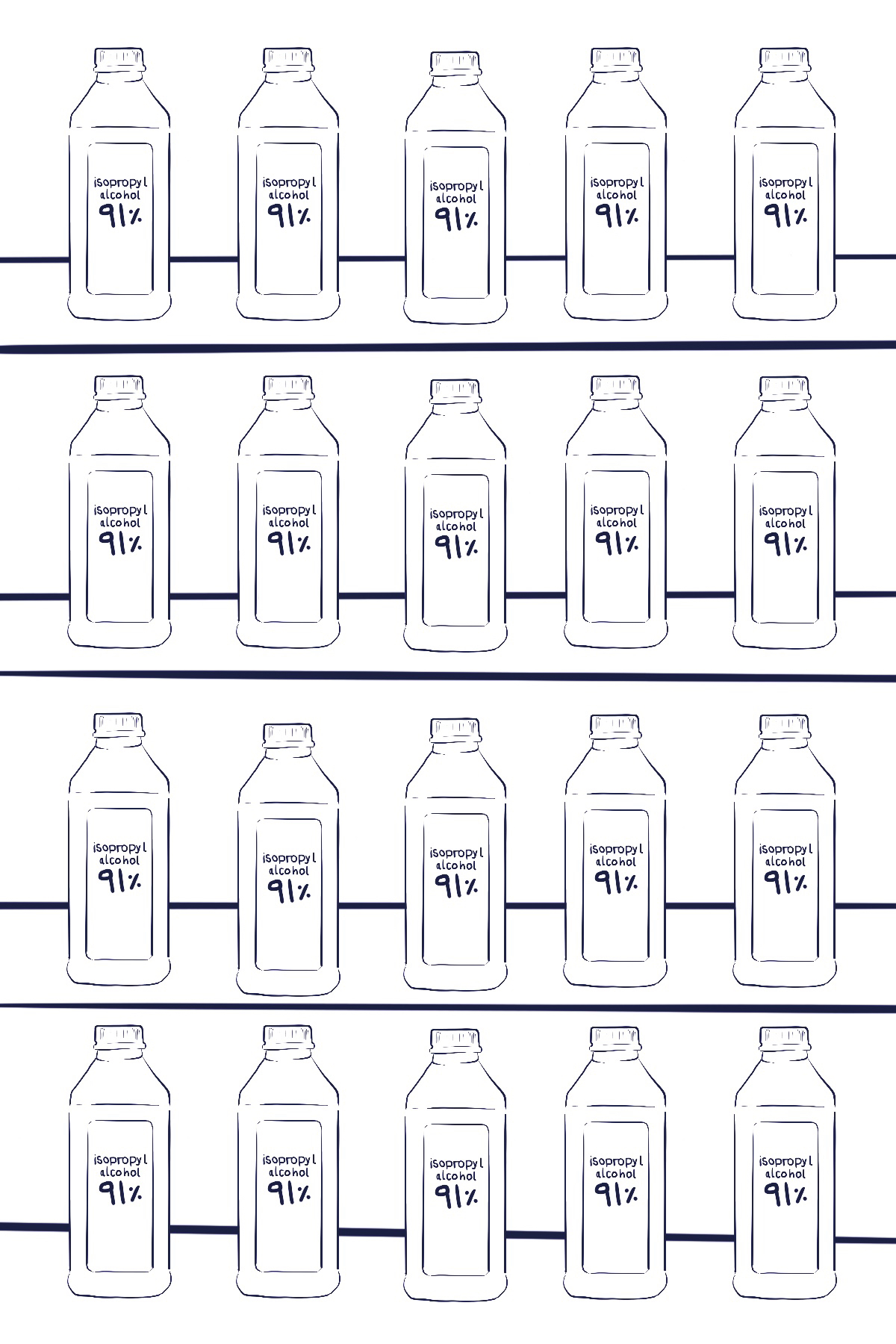91% alcohol always sold out: A disinfectant, deodorizer and illegal drug ingredient
Isopropyl alcohol has many practical functions as a cleaning agent, antiseptic, deodorizer and a chemical solvent. But shoppers might notice that 91% isopropyl alcohol (rubbing alcohol) is almost always sold out at the drugstore now; there are many reasons for the shortage.
First, the basics about isopropyl alcohol: many smells produced are a result of growing bacteria, which can be eliminated with rubbing alcohol. Odor-causing bacteria needs water to survive. The strength and fast evaporation of isopropyl alcohol makes it great for cleaning.
A post-pandemic world is more sanitary than ever before. When coronavirus emerged globally, demand for disinfectants surged. Millions stocked up on food, water and hygienic equipment as a result. Stores had to set quantity limits on certain goods like alcohol, hand sanitizer and toilet paper. According to a 2021 survey conducted by Stratus Building Solutions in Michigan, 89% of people said they are more conscious of hygiene than before the COVID crisis. In addition, 67% of people in the UK said they are more conscious of hygiene than before COVID, according to a 2022 survey by Citron Hygiene and OnePoll.
In conjunction with isopropyl alcohol’s legal uses are its illegal uses. The household disinfectant also plays a role in the illicit drug trade in North America.

Isopropyl alcohol has a variety of uses. Between March 10, 2020 and April 3, the price of isopropyl nearly tripled. (ART BY TESS PETERS/THE VISTA
According to the Oklahoma Bureau of Narcotics and Dangerous Drugs, overdose deaths in Oklahoma are up 135% in six years since 2018. Underground drug manufacturers buy quantities of 91%+ isopropyl alcohol to help them extract or synthesize chemicals. In contrast, drug manufacturers may prefer higher concentrations of isopropyl alcohol because lower concentrations (70%) produce less product, since more water evaporates during creation.
Without a pandemic or supply chain issues, however, there are typically no restrictions on the amount of isopropyl alcohol one person can buy. Weaker concentrations of alcohol, such as 70% isopropyl, are not as popular among consumers. Many people think that 70% isopropyl alcohol is a weaker disinfectant than higher concentrations, but some scientists recently found that 70% isopropyl alcohol disinfects better. Despite lower concentrations of alcohol, more water allows for alcohol to penetrate through the cell membrane and kill off bacteria. Higher concentrations are not as effective because the higher alcohol content can damage cell walls too quickly, without killing off the germs inside.
High concentrations of rubbing alcohol are also sought out after by resin printers. The relationship between it and resin printing revolves around the cleaning and post-curing stages of 3D printing. Resin printers typically use over 90% isopropyl, however 99% is mostly recommended. People must be cautious and secure when using such a high concentration of rubbing alcohol because of its flammability and inhalation dangers.
Even lower concentrations of isopropyl alcohol are extremely toxic to humans when ingested. Isopropyl is unlike usual drinking alcohol, chemically known as ethyl alcohol. Ethanol and rubbing alcohol have different chemical makeups which is why one is safe for moderate consumption and the ladder can kill.
Higher concentrations of rubbing alcohol can be more dangerous because more alcohol vapor is present. This high concentration can cause chemical burns with prolonged skin contact and increased eye irritation. Isopropyl alcohol is highly flammable, more of it means there is a greater fire risk. Due to the unregulated nature of illegal drug labs, chemical fires and explosions are a great risk and happen frequently across the U.S. In February 2024, a deadly fire in Tulsa was revealed to be from a meth lab. In March, New York State fire and police responded to an explosion near Horseheads, NY, also a result of meth manufacturing.
In the wake of pandemic panic, rubbing alcohol’s disinfectant properties became a highly-coveted commodity. Its scarcity cannot be attributed to only hygiene-conscious consumers though. Isopropyl alcohol’s use in the drug manufacturing process and illegal drug trade throughout the past two decades has substantially increased. Despite its universal utility, the dangers of rubbing alcohol can cause blindness, nausea, seizures and damage to organs. As the world faces new supply chain issues every year with pandemics, wars and bridge collapses, the roles of this product affect a wide variety of people and financial markets.

